The Timestone Administrator (more commonly referred to simply as tsAdmin) is used to create, update, and interact with the Timestone Software MySQL database.
The role of Timestone Administrator
Broadly speaking, tsAdmin performs the following functions:
Creates the timestone database when first installing the software and updates the database as required
Centralizes many parameters, such as the definition of fields and paths
Sets up working environments through the creation of Seasons, Workspaces and Accounts
Enables the ordering methods through the creation of Products, Packages, and Offers.
Who should use the Timestone Administrator
Although there are no licensing restrictions to tsAdmin and it can be freely installed on all computers, it is strongly recommended that only the main Timestone Software operator in the company uses tsAdmin.
WARNING
Many of the actions in tsAdmin are global in nature and can effect most or all jobs in the database. For this reason the Timestone Administrator should only be used by senior staff in the company who are very familiar with the software.
Installing tsAdmin
The Timestone Administrator is automatically installed by most of the Timestone Software applications - notably the “Neo” apps. There is no separate installer for tsAdmin, nor is a license required.
The Administrator installs an exe file - tsAdmin.exe - into C:\Program Files (x86)\Timestone Software
Launching Timestone Administrator
Launch tsAdmin by:
Executing the tsAdmin.exe directly
Using a link or shortcut to the tsAdmin exe
Typing Timestone Administrator into the Windows Start menu
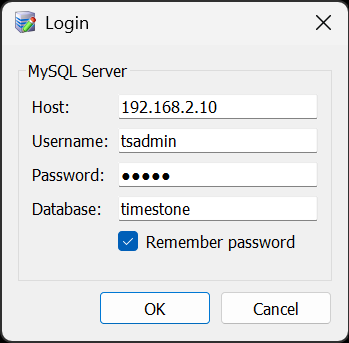
Figure 1: The tsAdmin connect window
The Login/Connect window
Upon launching tsAdmin, the user is presented with the Login window as pictured above.
Parameter | |
|---|---|
Host | The name or IP address of the MySQL server. |
Username & Password | Created by Timestone Staff when installing the MySQL Server. |
Database | The name of the database to connect to. Defaults to timestone. |
The first time tsAdmin is run, the (empty) timestone database will be created. This is usually done by Timestone Staff as part of the initial installation and configuration of MySQL.
Running tsAdmin after updating the software
Updates to the applications often also involve an update to the database. This update is performed by tsAdmin when needed. It is therefore important that whenever a user upgrades the software, they first run tsAdmin.
Important
Always run tsAdmin as the first step after updating the software. This will ensure any required database updates are performed.
The Timestone Administrator objects
Several parameters are available in tsAdmin to facilitate the building of a working environment for the users.
Seasons and Workspaces
Seasons and Workspaces are simply a way of grouping, classifying, or labelling jobs.
Recommendation
Although both are optional, it is strongly recommended the user employ at least one of these two objects.
Seasons are most commonly used to classify jobs chronologically. Fall2025, 2025-2026 or simply 2025 could all be examples of seasons. This chronological grouping of jobs can be very useful when it comes to performing actions such as organizing template and graphics directories, creating offers, archiving old jobs, and much more.
Workspaces are often used to group types of jobs. Sports, Schools, Graduations, or Dances could all be examples of workspaces. Defining fields for a given type of job is a common use of workspaces. The data fields for schools, for example, would be different from those needed for sports.
Note, the above recommendations are simply that - recommendations. The user is free to use Seasons and Workspaces in any way they see fit in order to organize their jobs as desired.
Accounts
In many aspects, Accounts simply provide another level of classifying jobs in addition to Seasons and Workspaces. However, a couple of properties unique to Accounts make them worthy of separate discussion.
Accounts are often used by labs, handling work from several photographers. An account is created for each photographer, giving the lab a way of creating a working environment for each photographer. Paths can be set and Offers created for each account are but two examples of how a lab may use accounts.
School photographers often create an account for a school or school district.
Accounts in IOS
Accounts have two properties that can be set per account, which are not available for Seasons or Workspaces. The EmailAdviceTo and EmailReplyTo fields are often used by labs uploading jobs to IOS on behalf of photographers. These fields are then prefilled in tsIOS when uploading a job for an account (photographer).
Aspect Ratios and Head Guides
Although both these attributes can be set in the job on a job-by-job basis, it is advantageous to define them centrally in tsAdmin, thereby making them immediately available for each job. Furthermore, since they can be defined for given Seasons, Workspaces or Accounts, different aspect ratios can be defined for different job types if needed.
Fields
Fields (and tags) can also be defined on a job-by-job basis or indeed ‘on-the-fly’ as a text file is being imported; however, for the most part, fields are defined in the Timestone Administrator.
Fields created in tsAdmin will automatically be present when a job is created, thereby saving the user the trouble and time of having to define fields on a job-by-job basis. Furthermore, since fields can be created for various combinations of Season, Workspace and Account, different fields can be available depending on the job type.

Figure 2: Fields created for the Schools workspace
Further reading: Defining fields
Fields are simply containers to hold data. Since data in Timestone Software can be organized into a logical structure, different levels of fields are available to match that structure.
Working with fields is one of the most fundamental tasks in Timestone Software, and as such, a thorough understanding is essential. To this end, a more complete discussion of Fields is available here:
Paths
Setting paths is one of the most important functions of tsAdmin as it determines the ability for the software to find the resources it needs - images, templates, graphics, and backgrounds.
The ability to use dynamic @codes in the path statements means paths can be entered in a generic manner, automatically pointing to the correct directory of resources depending on variable elements such as the job name, the season or the offer.
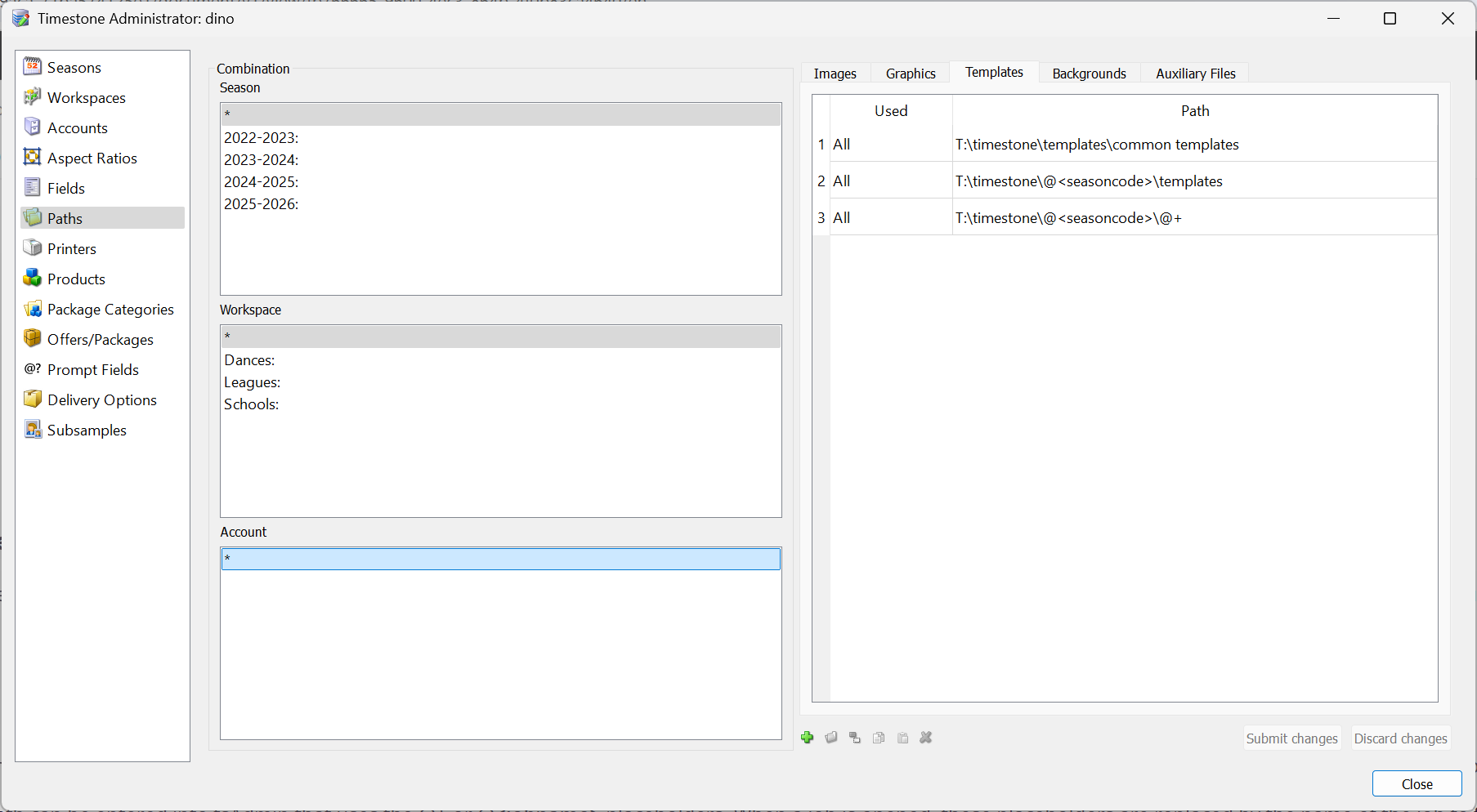
Figure 3: Three paths to templates with two making use of @codes
Further reading: Template Paths
One of the most important administrative considerations for a user is an efficient, organized structure for the storage of templates.
The following document provides a thorough discussion of best practices for setting template paths. Furthermore, the concepts it discusses, notably the use of @codes in path statements, can be used when setting paths for other resources as well.
Printers
The Timestone Administrator allows the user to define Printers which can then be associated with products. The print queue can then be filtered for a particular printer.
Products
All products offered for sale to customers are entered into the Timestone Administrator. The products are then added to Packages in Offers.
Products are often directly related to a Timestone Software pack layout template and are defined with various attributes.

Figure 4: A typical user will have many products defined in tsAdmin
Further reading: Products in tsAdmin
A product can be considered to be anything that is “produced” in the Timestone Software applications. By adding products to Packages in Offers, the products can then be ordered by customers.
A basic 8×10 print, a package of mixed print sizes, and sports memory mates are all examples of products that are produced with Timestone Software’s NeoPack application. Likewise, a traditional (names under) group photo is a product formed in NeoGroup, while a composite group photograph is a product resulting from NeoComposite.
Other products are a little more abstract in nature. A digital image download and retouching are not physical products, but can still be ordered by customers.
Package Categories
Package Categories are used in the Timestone Software Internet Ordering System (IOS) to group packages into ‘categories’. Online, the categories are displayed as buttons in the IOS shop. Clicking a category button displays only the packages in that category.
Further reading: Package Categories
Package categories are defined in the Package Category object of tsAdmin before being assigned to Packages in Offers.
A full discussion of Package Categories, along with examples, is available in this document.
Offers/Packages
Together with Products, Offers and Packages are fundamental to all the ordering methods in Timestone Software.
Offers are often created with respect to a combination of Season, Workspace or Account as needed.
Further reading: Offers, packages and products
An Offer is composed of one or more packages, which in turn are composed of one or more products.
It is useful to think of an offer as an order sheet from which customers select what they would like to buy. (“Here are the products I offer you”)
Offers are assigned to jobs.
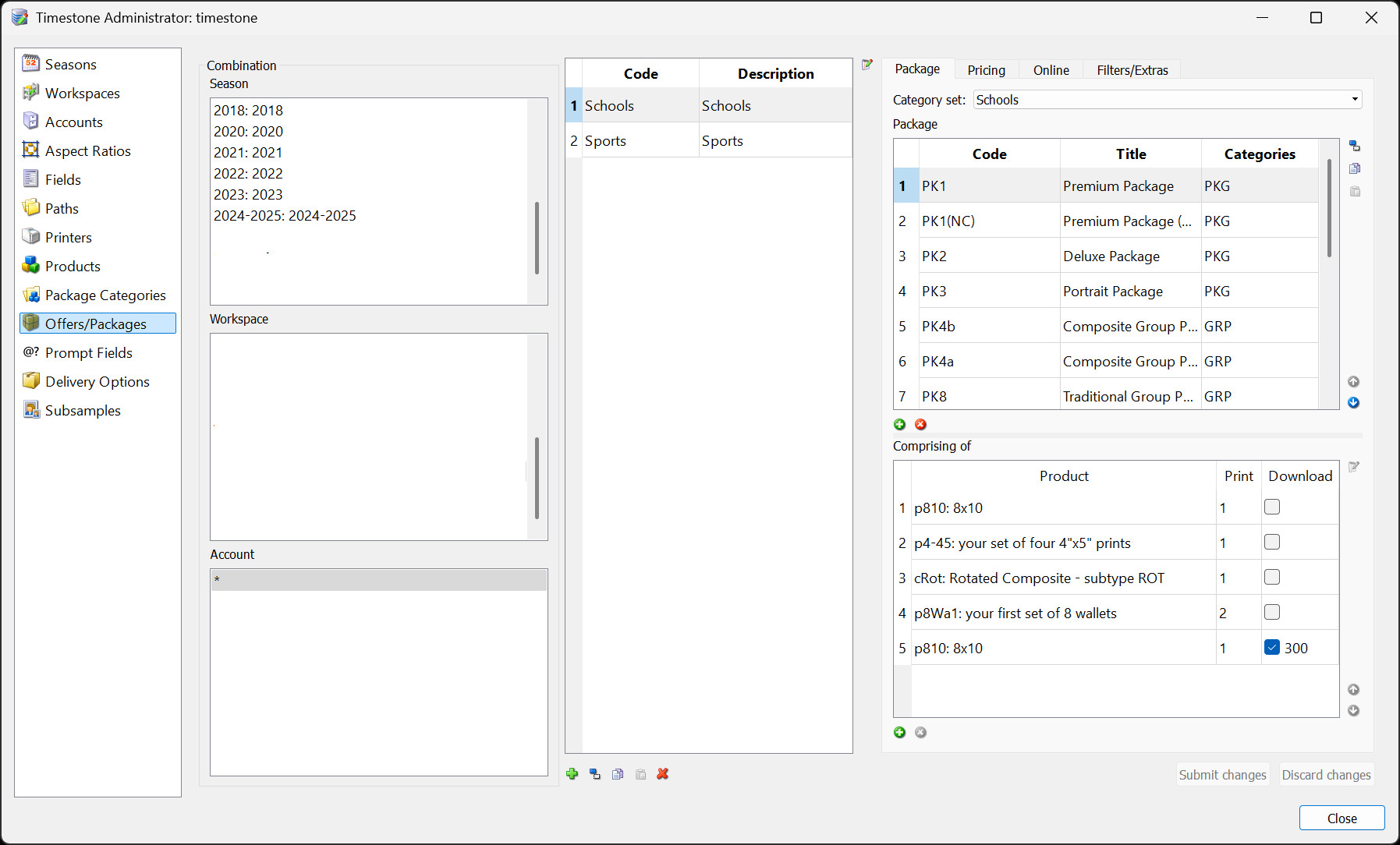
Figure 5: A “schools” offer
Set offer options
Clicking the Notepad Icon to the right of the offer description area provides access to the Offer Options window and the following options:
Is Active
Display blurb initially
Present add to cart initially
Notes
Display blurb initially displays the package’s blurb in the IOS Package Workbench immediately, without the need for the online customer to first click the Info icon.
Similarly, Present add to cart initially will present the Add to Cart button immediately, allowing the online customer to add a package to the cart without the need to step through each customization step.
Prompt fields
Some photographers allow their IOS customers to personalize certain products with their own data. This is often used to customize products such as bookmarks and wallets, where the customer can be prompted to enter a preferred name to appear on these products. Entering information for trader cards is another popular use of prompt fields.
Having added prompt fields to templates, the user can optionally enter these fields into tsAdmin, where they are able to enter a custom prompt for the field - the text that will be displayed to the online customer, asking them (“prompting them”) for information.
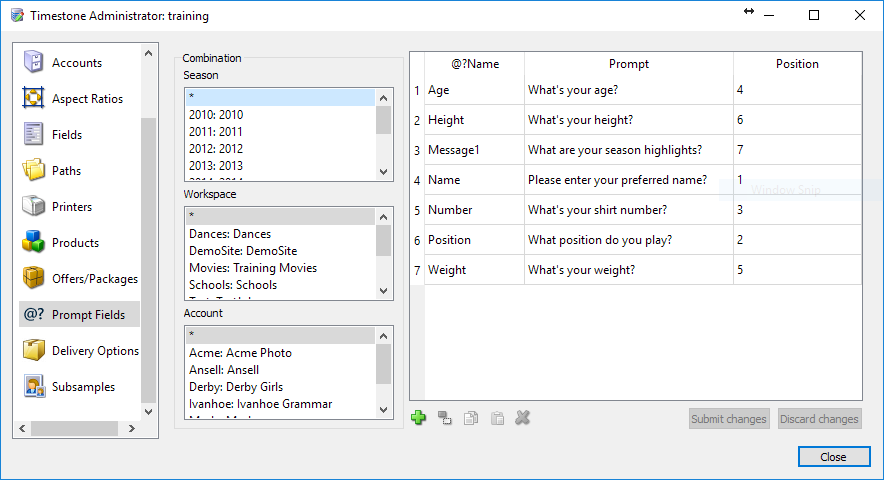
Figure 6: Prompt fields entered into tsAdmin
Further reading: Prompt fields
A thorough discussion of prompt fields is available here:
Delivery Options
A photographer using IOS may wish to offer their online customers various choices with respect to the delivery of their online order. These delivery options are defined in the Timestone Administrator, where they are grouped into one or more Delivery Option Sets.
When uploading jobs to IOS, the photographer can select the required Delivery Option Set.
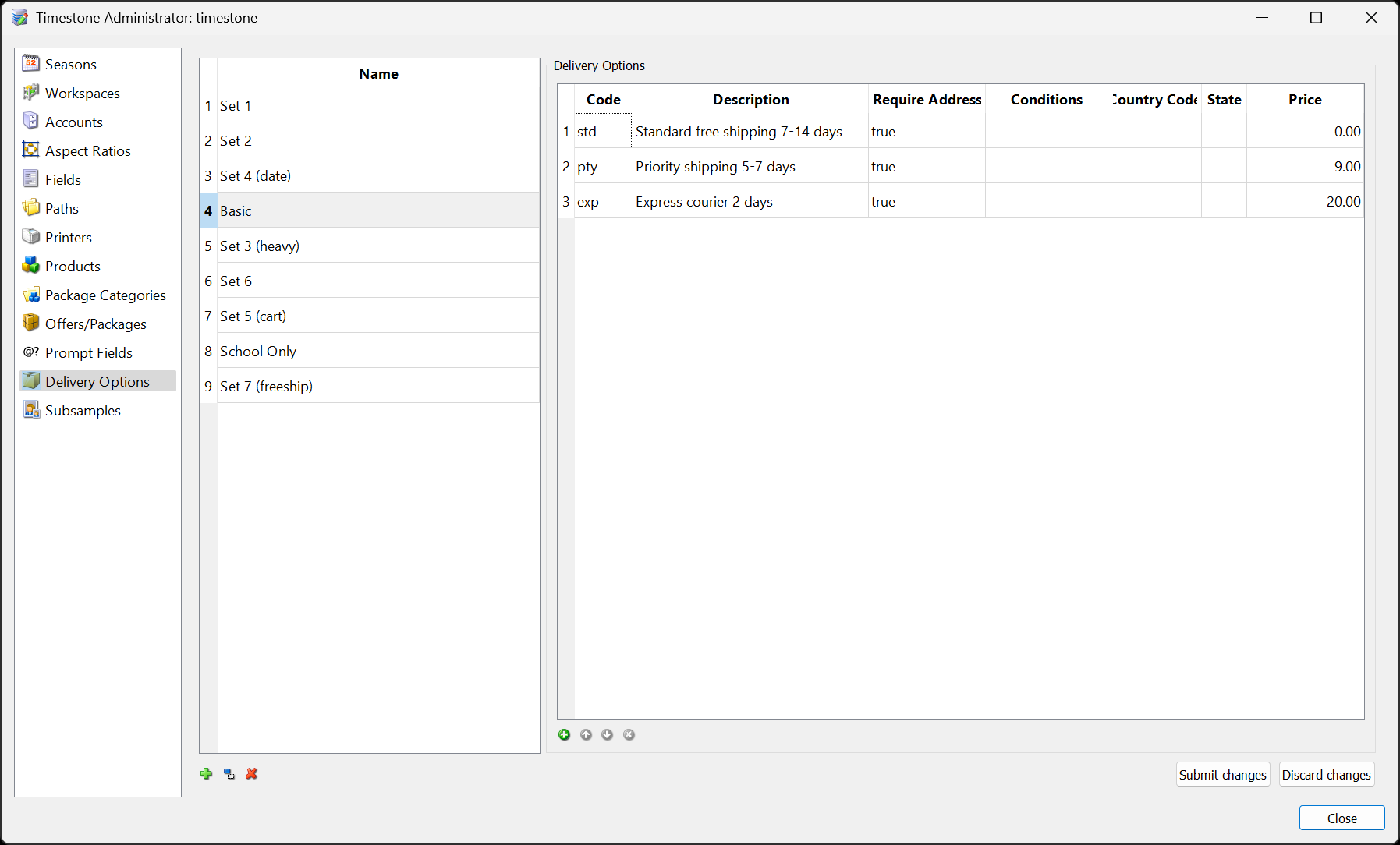
Figure 7: Delivery Option Sets with Delivery Options
Further reading: Delivery options
IOS supports three different methods of handling the delivery of online orders
Delivery address not required
Require delivery address (ship to customer)
Delivery options
By far the most flexible are Delivery Options as defined by the user in tsAdmin.
A full discussion of the different methods with emphasis on Delivery Options is available here:
Subsamples
When images are imported into Timestone Software, they are subsampled down from the full size image. Wherever images are henceforth displayed in the software, the user is viewing these so called “image previews” - not the original, full sized images.
The default size for the image previews is:
512K for subject, folder and family images
2048K for group images
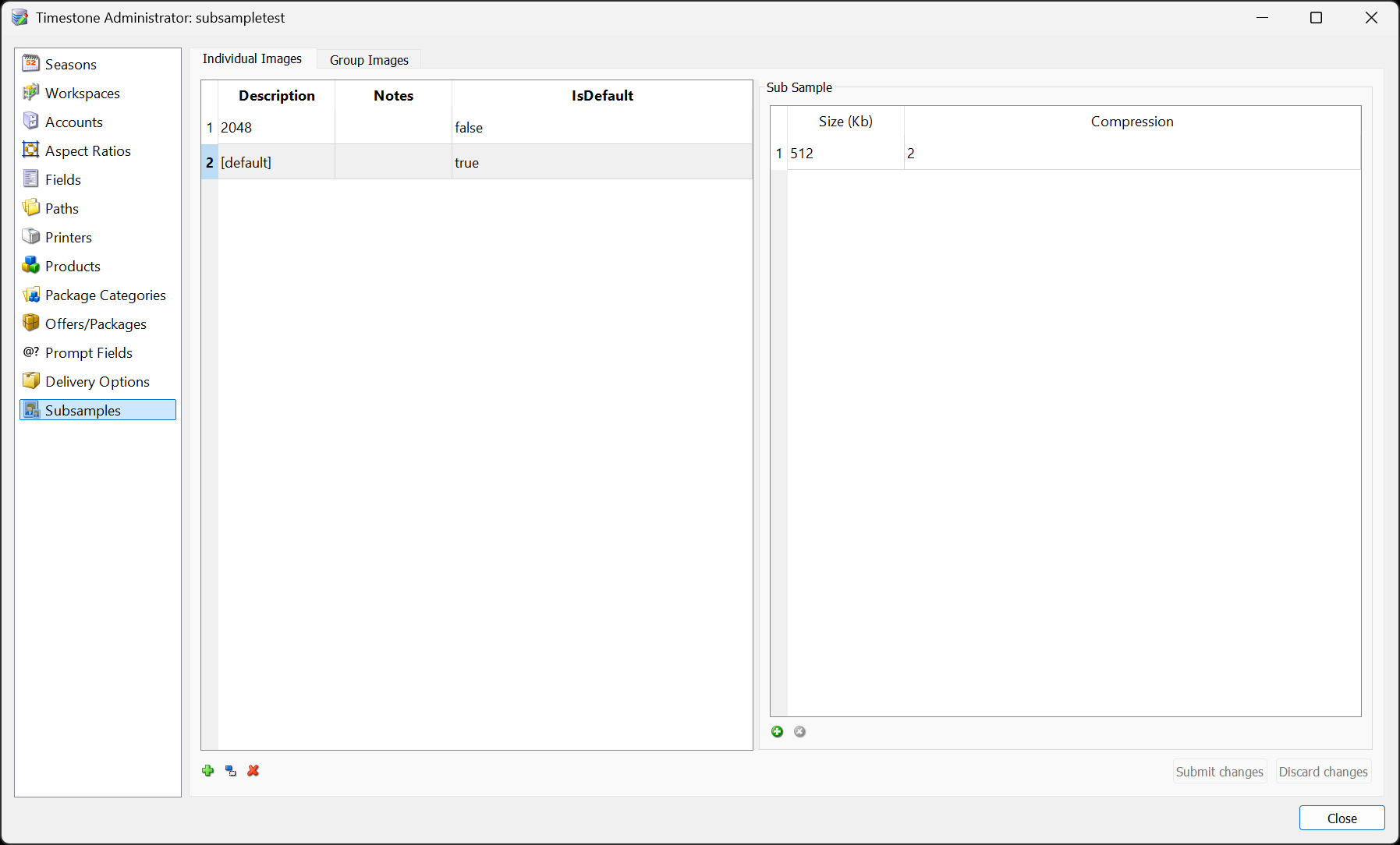
Figure 8: The default subsample set
Further reading: Image subsamples
The subsampled image previews are stored in the MySQL database and are the major contributor to the size of the database.
While the user is free to create additional subsample sets with additional preview sizes, care should be exercised to avoid the database size becoming so big that the server runs out of disk space.
A thorough understanding of subsamples and image previews is therefore recommended and can be achieved by consulting this article: